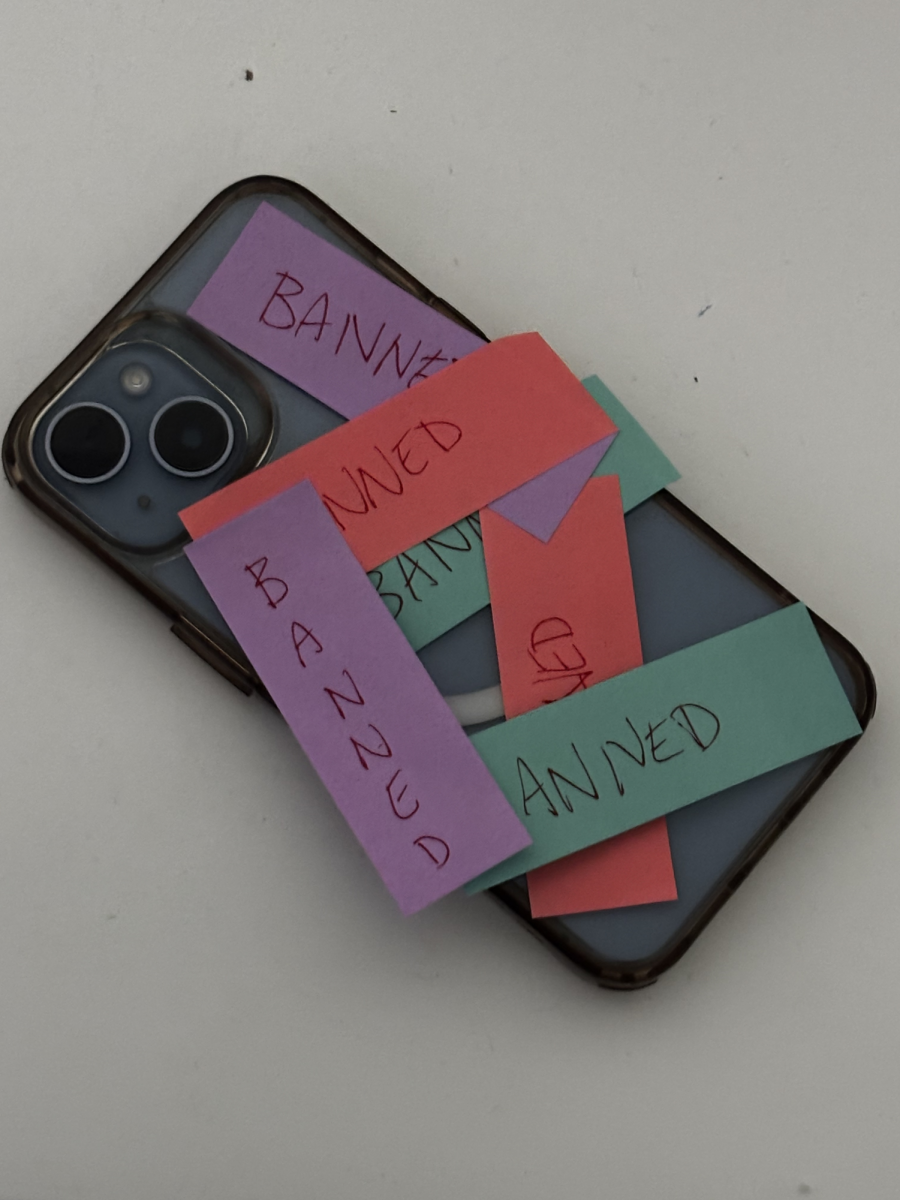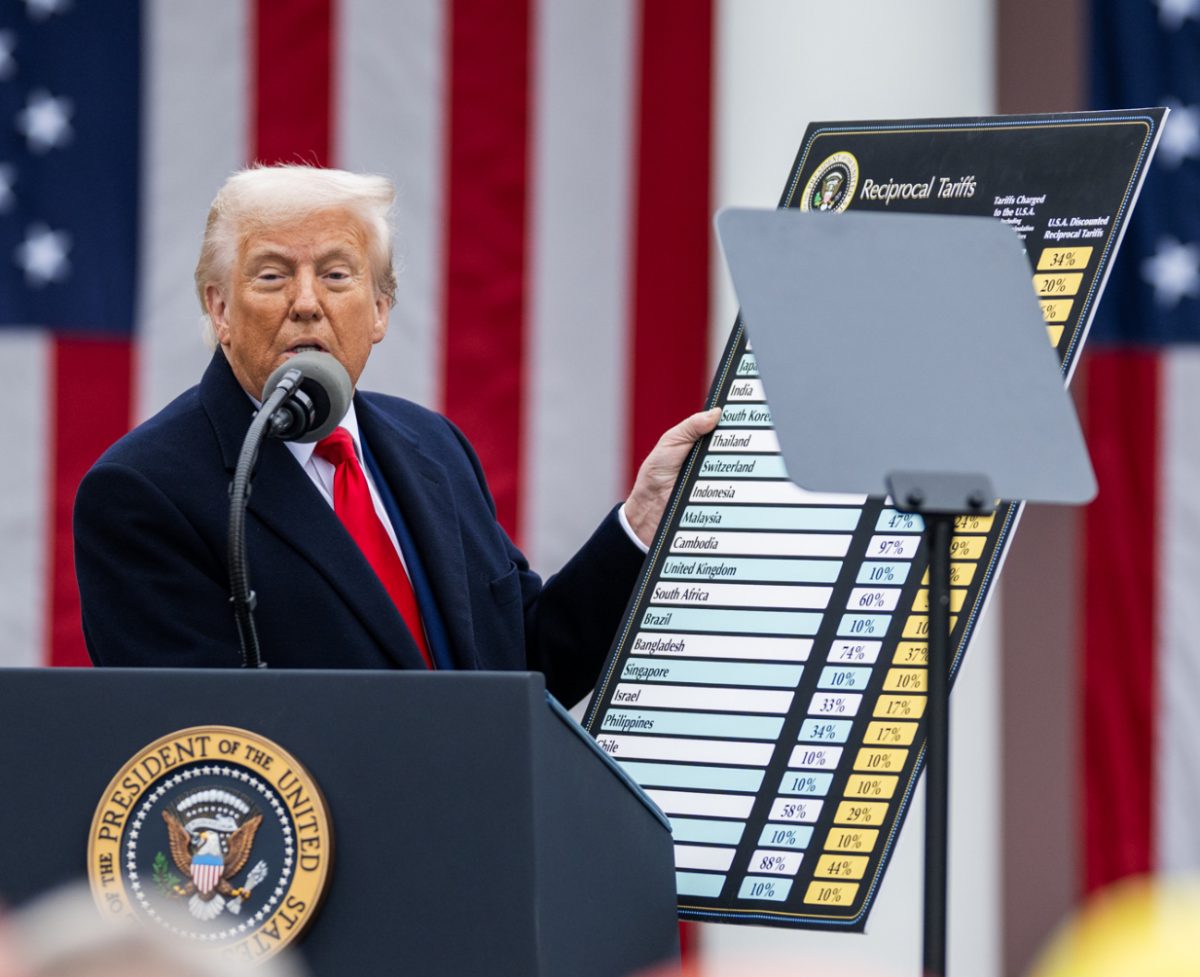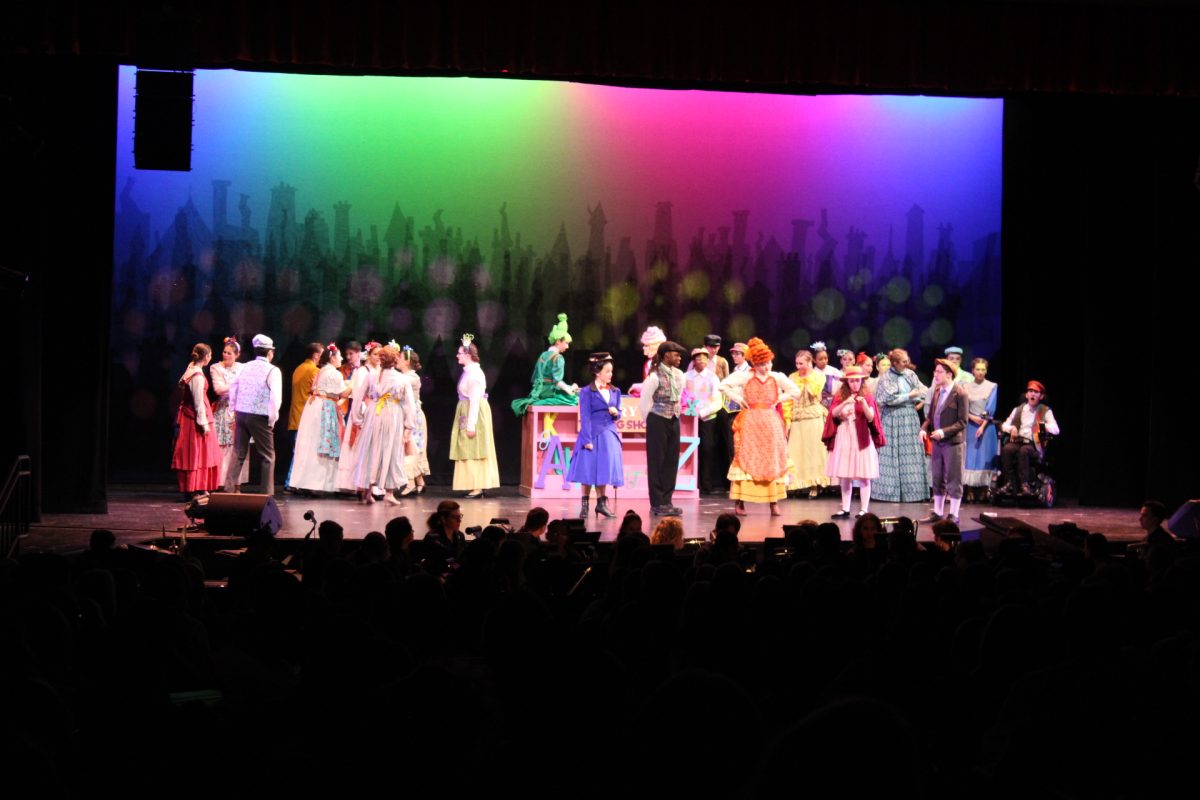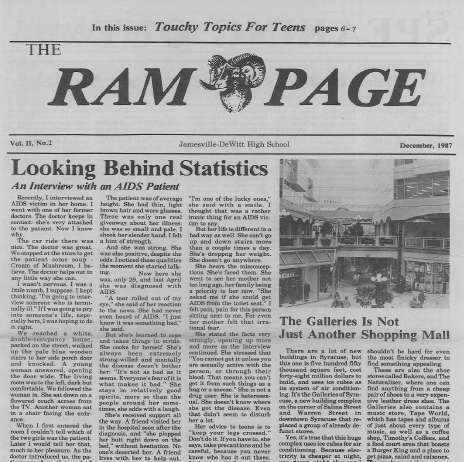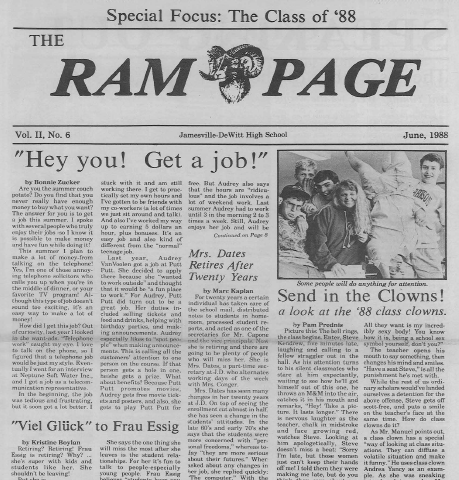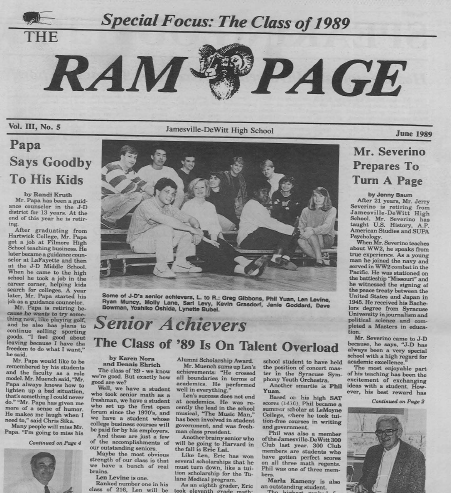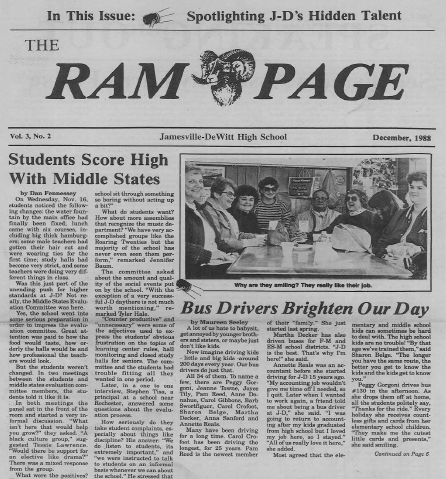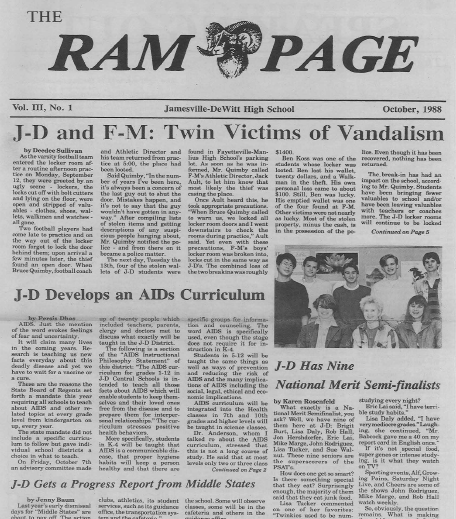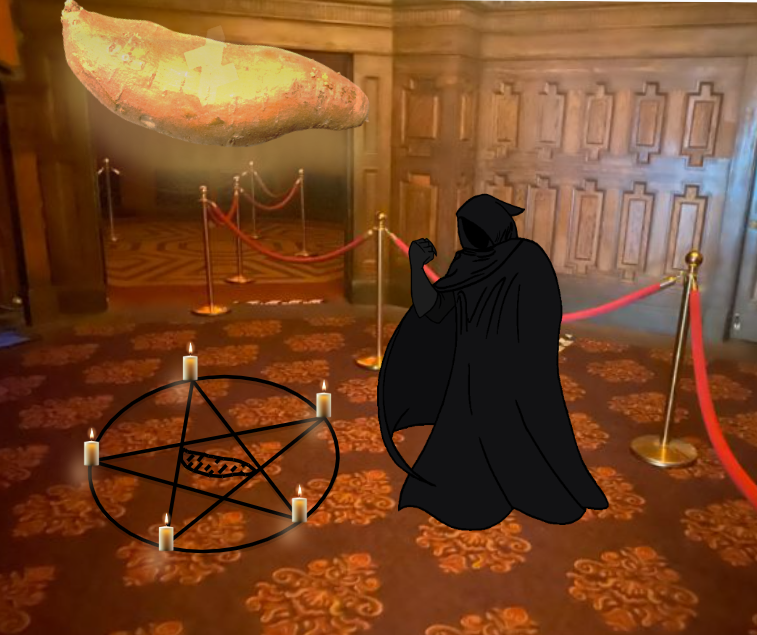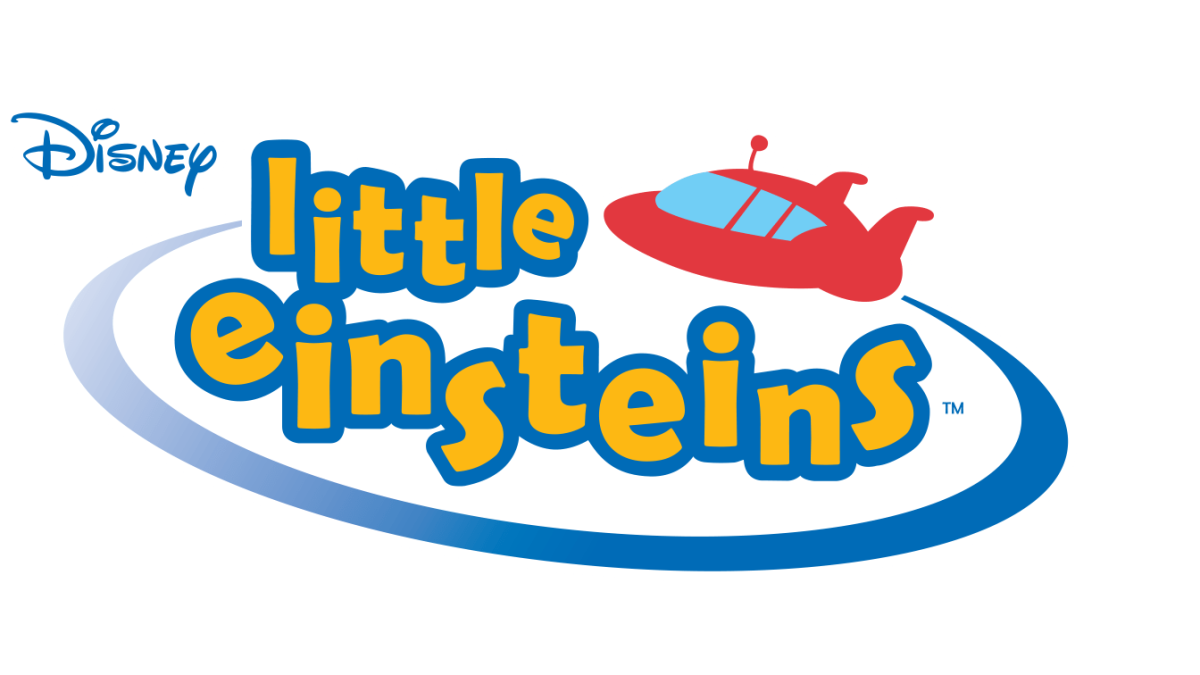Contributing Writer Alethea Shirilan-Howlett, ’20
In the 1987 film Baby Boom, directed by Charles Shyer, career woman J.C. Wiatt (Diane Keaton) inherits a toddler from a deceased cousin and raises the child as her own. In one particular scene, Wiatt meets other parents of very young children at a playground who weep over their childrens’ rejection from elite preschools. At the end of the scene, another mother’s son walks into the frame to comment: “Mom, doesn’t the sky look just like Cézanne’s Bay of Marseilles?” The mother replies: “Gee, it does. Oh, Ben, that is a terrific observation. Go play, honey.” This prompts a stunned Wiatt to ask if they teach Cézanne in preschool. Ben’s mother explains that Ben is a graduate of “The Center,” a week-long program that “teaches you how to multiply a child’s intelligence.” According to his mother, when they first went there, Ben could hardly speak. By the time they left, “he was reciting ‘The Raven’” (Shyer).
Though it may have been written as a satirical exaggeration of the privileged world of for-profit supplemental education, Baby Boom harnessed its humor from truth. Then and now, worried parents have entrusted the development and presumed success of their child in the accumulation of cultural capital. The concept of “having” or “accumulating” cultural capital, introduced by Pierre Bourdieu and Jean-Claude Passeron, constitutes having command over behaviors that legitimize inequality. Cultural capital is not simply inherited, but it is slowly acquired over time. For example, being able to recognize famous classical music and paintings would demonstrate one’s cultural capital, their “worldly” taste. Tastes, Bourdieu says, are “markers of class” (Bourdieu 2).
Little Einsteins, an American children’s television show created by Eric Weiner, taught musical skills and introduced children to classical music and iconic visual art. The program invites its target audience of young children to partake in the consumption and absorption of this knowledge, which allows them to get a head start on accumulating cultural capital early in their lives. Einsteins presents its audience with a fantasy world in which cultural capital is the invitation to a fantastical capitalist future filled with opportunity and rewards. Many viewers, however, cannot access these rewards in real life due to the lack of access to the resources that allow for these rewards to be reaped. The text is insufficiently able to fully suppress its unreality as the show’s antagonist represents the critique of an elitist society in which only those with access to this cultural capital can thrive. Below the surface, Little Einsteins portrays the Cold War-era antagonism of beauty, art, and the “American Dream” versus the cold, mechanical egalitarianism of socialism, and its main characters lure their audience into believing that they will have membership in a system that values what most viewers don’t have access to.
Little Einsteins aired on Playhouse Disney with new episodes from 2005 to 2009. The show was produced by The Baby Einstein Company and Curious Pictures and was created by Eric Weiner, who co-created Dora the Explorer (Keil). The show follows four children: six-year-old Leo and his four-year-old sister Annie, and their friends, six-year-old June and five-year-old Quincy. Each character has a specific musical talent or interest: Leo likes to conduct music, Annie enjoys singing, June is a practicing ballerina, and Quincy can play any instrument he touches, but is most often seen playing the trumpet. The children travel around in their flying spaceship named Rocket. At the beginning and end of each story, the Little Einsteins identify the featured pieces of artwork and classical music that will be tied in with the plot by name. In the episode “Ring Around the Planet,” the planet Saturn loses one of its rings and sings “Symphony No. 9” by Antonín Dvořák to call for it. On their mission to return it, Rocket gets stuck in “space goo,” or, the bottom of Tree of Life by Gustav Klimt (Ring).
The four children encourage each other to showcase their musical interests and talents. Within the first three minutes of the first episode, “Our Big Huge Adventure,” Leo asks the Little Einsteins to introduce themselves. “Sing something, Annie,” he tells his sister. After each of them displays their talent, the others clap for them and sing their praises. “Great singing, Annie,” says Leo as he walks over to give her a hug. “Yay, Annie!” June says. “That was great!” (Our). At the end of each episode, the characters walk out on a stage to be applauded for by an unseen audience. The viewers are acknowledged as well. “Go on, clap for yourself!” Quincy says to the spectator.
The characters seem to demonstrate different levels of musical proficiency. Annie is often off-key in her singing and sometimes runs out of breath mid-pitch. While her skill set is appropriate to her age, five-year-old Quincy is a musical prodigy with sometimes impossible capacities. They are both welcomed by the group regardless of their skill level, as the common denominator of the Little Einsteins is accessibility. In the episode “How We Became the Little Einsteins,” we learn that Rocket gave the Little Einsteins the items they needed to be successful. “Rocket has toys!” Annie says. “Snacks,” Leo adds. “Art supplies!” June exclaims. Quincy finds musical instruments in Rocket’s closets, which he takes a liking to, including his beloved trumpet (How). Without access to Rocket’s instruments and supplies, the Little Einsteins wouldn’t be able to go anywhere, literally and metaphorically.
In C. Wright Mills’s “The Power Elite”, the utter powerlessness of the average member of society is explained in detail. An astonishing amount of power is shared by what he calls “the big three”: the political, economic, and military domains of national power. Mills writes that power resides in the ability of a person or a group to make decisions that could have disastrous consequences. Mills writes that “the tempo of change (in the societal structure) is so rapid,” that ancient civilizations continued for hundreds of generations with only slight changes in their structure, but recent history has seen so much change that one’s social position is constantly threatened by new developments or results of consequences (Mills).
Parents of Generation Z, born between 1997 and 2012, saw the older members of this generation enter the world slightly before and after 9/11 and enter elementary school when the 2008 recession hit. The resulting economic uncertainties from these major events may be motivation for concerned parents of Generation Z to sit their kids in front of what Paul Farhi describes as “broccoli television,” educational programming for children (Farhi). This included Baby Einstein videos, which had booming success in the early 2000s under titles like “Baby Shakespeare” and “Baby Mozart,” and the airing of Little Einsteins before, during, and after the 2008 recession. Bourdieu suggests that “nothing more clearly affirms one’s ‘class’, than tastes in music” and emphasizes that the “conditions of (musical) reception” are especially important for determining social class. One might gain musical knowledge later in their lives through listening to records, but “early, domestic, practical acquaintance,” or childhood music lessons, is the most effective way for a child to gain cultural capital early on (Ball).
Though small, the Little Einsteins are a relatively diverse group of children.
Leo and Annie are both caucasian. June is “of Asian descent” and Quincy is African-American (Baisley). At the beginning of the series’s run in 2005, 56% of enrolled Harvard freshmen were white, 22% were Asian, and 11% were black (Ashkenas).The Little Einsteins represent the exact demographic of a supposedly more well-balanced, feasibly diversified university: 50% of students are white, 25% are black, and 25% are Asian.
The “Diversity and Inclusion” page on the University of North Georgia’s website features four students who seem to match this demographic Little Einsteins has imagined, down to the hair color of the white students in the photo. The show sets up an ideal for a picture-perfect learning environment, but something is slightly off. The Little Einsteins live in a world that is empty of all other humans, except the viewer. When visiting landmarks, such as the Leaning Tower of Pisa (Birthday) or the Eiffel Tower (Melody), these popular tourist locations are deserted. Even at their school, the four children are the only people in the building. There is a spookiness about these four gifted children living alone in this fantasy world with seemingly no competition. There is almost no one to compete with for the rewards of their missions, whether it be buried treasure (Pirate’s) or a “birthday machine” that creates a spontaneous birthday celebration for the Little Einsteins (Birthday). There is, however, one exception.
While the Little Einsteins are indeed the only human characters depicted in the program, there are many other characters that complete the show’s cast, usually animals or personified objects. All of these characters communicate using musical sounds, usually played on a single instrument and often structured within the format of the episode’s featured song. Rocket communicates with the Little Einsteins with the sound of a xylophone. There is one exception to this pattern: the Little Einsteins’ antagonist, Big Jet. This character, a jet plane, makes his entrance with ear-splitting, jarring, whirring noises rather than music. Big Jet appears very frequently throughout the series, always disrupting the plans of the Little Einsteins. He regularly steals their musical instruments in order to do so.
When studying Big Jet’s character, it is especially important to note his design: he is a blue and black jet plane, designed with sharp lines and angles, which contrast with Rocket’s cherry red color and rounder, friendlier shape. At another glance, it can be discovered that Big Jet bears a striking resemblance to a fighter jet plane developed in the Soviet Union in the late 1980s, the Mikoyan MiG-29K.
Big Jet’s motive to take the instruments and tools the Little Einsteins use to practice their bourgeois art, paired with his Soviet design, evoke the ethos of socialist realism, whose three principles in the Soviet Union were “accessibility, the spirit of the people, and the spirit of the party” (Von Geldern). Socialism critiqued the fine arts as inutile and entitled. French historian Jean Gimpel attacked “high art,” especially oil paintings, as a product of capitalism (What). As he terrorizes the Little Einsteins for practicing this elite art, Big Jet is the spectre that haunts what the Little Einsteins stand for.
Though many children’s television shows rely on the use of audience participation through breaking the fourth wall, Little Einsteins uses it to include its audience of children in its army to help conquer the villain. In the episode “Show and Tell,” Big Jet attempts to ruin the Little Einsteins’ show-and-tell celebration by seizing the objects that the children use to present their talent. He takes Quincy’s instruments, June’s ballet slippers, Annie’s microphone, and Leo’s baton. “This is terrible!” says June. “Now we don’t have anything to show for show-and-tell!” “Don’t worry, team! Rocket can help us catch Big Jet!” says Leo. He turns to the audience, narrowing his eyes. “But to get our favorite things back for show-and-tell, we’re going to need your help,” he says. “Will you help us get our favorite things back from Big Jet? Great!” (Show). The text enlists its young audience in defeating the enemy, much like an old war propaganda film would. Little Einsteins transports its audience back to the fight of capitalism versus communism, back to the 1950s. Though there was much political unrest (Mills wrote “The Power Elite” in 1956), the economy was booming, and the “American dream” was in full swing. The opportunities for young Americans were endless, and the existential threat of powerful communist warfare like Big Jet was imminent. The show preys on the fears parents may have about current economic turbulence and reels their young viewers in with applause, and once they are engaged, they are recruited to join the fight. There is a childlike quality to the concept of good versus evil, of needing to pick a side, which may resonate with the show’s very young audience.
In an unexpected turn, as Rocket and the kids chase down Big Jet, they follow him to a cave that has a blocked passageway. The only way to get out of the cave is to play certain instruments that will remove the crystals blocking the way. It is revealed that Big Jet understands how to play all of the instruments he stole from Quincy: the timpani, the cymbals, and the double bass. The crystals clear the way, and Big Jet is able to move on. Knowledge was never what blocked Big Jet from getting his way, it was access. Just as the Little Einsteins became the Little Einsteins only once they had access to their tools, once Big Jet gains access to the instruments, he, too, is able to be successful. At the end of this story, one of the last episodes in the series, the Little Einsteins manage to get their prized possessions back in time for show-and-tell. Big Jet appears, scaring the kids, but they learn that he was there to apologize. He makes a sad whirring noise as he prepares to leave. “Aw. Big Jet is sad! He wishes he had something special to show at show-and-tell!” Annie says. In a dissonant, random, and seemingly forced end to the episode, Rocket offers Big Jet a sombrero so he can participate in show-and-tell with him, and the episode ends as Big Jet and Rocket dance together to “Carmen Suite No. 1” by Georges Bizet (Show). Much as the Little Einsteins were fortunate enough to receive their access to success from Rocket, Big Jet, to wrap up the end of the show’s run, accepts the offer from Rocket to enjoy the access afforded by the literal instruments of cultural capital.
Little Einsteins, like Baby Einstein, advertises itself by showing that it can give children a head start on accumulating cultural capital, to set them up for success at such a young age as tumultuous events continue to shake their childhoods. In reality, the program is in no way equipped to provide viewers with more than a basic understanding of musical tempo and a few recollections of famous pieces of art and classical music. It cannot guarantee the success of these children who do not have access to instruments, lessons, or tutoring. Private piano lessons, for example, cost an average of $60 for an hour-long lesson. If a child has lessons for an hour, once a week, from the time they turn four years old to the day they turn eighteen, the total cost of those lessons would amount to $46,800 (K.). Indeed, Bourdieu recommends childhood music lessons to bolster cultural capital, but this financial cost is far out of reach for many of those who viewed the program.
Little Einsteins, in all of its 24 minutes-per-episode glory, much like the week-long “Center” mentioned in Baby Boom, is only a starting point. It cannot ensure that a child of Annie’s level of proficiency will improve upon her skills enough that she will be accepted into a top arts school such as Julliard, but the show promotes the fantasy that Annie herself will not be barred from entry into the competitive spheres of higher education. She has access to all she’ll ever need to be successful, and there’s almost no one else in her world to compete with. While the Little Einsteins themselves enlist all of their viewers to help them succeed against Big Jet in their elitist world, only so many of those young eyes will be able to share in the spoils of an education system that rewards so very few. It tells its audience of children without access to remain participants in a structure that will not benefit them, but they can have comfort in knowing they’re on the side of the “good guys.” Perhaps Big Jet is a representative of those trying to access that same respect and validation that the elite are given for being able to display their cultural capital at show-and-tell.
Works Cited
- A Russian MiG-29K at MAKS Air Show 2007. Wikipedia, Wikimedia Foundation, Inc., en.wikipedia.org/wiki/Mikoyan_MiG-29K#/media/File:MiG-29K_at_MAKS-2007_airshow_(altered).jpg. Accessed 15 May 2020.
- Ashkenas, Jeremy, et al. “Even With Affirmative Action, Blacks and Hispanics Are More Underrepresented at Top Colleges Than 35 Years Ago.” The New York Times, The New York Times Company, 24 Aug. 2017, www.nytimes.com/interactive/2017/08/24/us/affirmative-action.html. Accessed 14 May 2020.
- Ball, Stephen J., and Carol Vincent. ‘Making up’ the middle class child: families, activities and class dispositions. London, Centre for Critical Education Policy Studies, 2006.
- Baisley, Sarah. “New Little Einsteins Series to Debut On Disney Channel.” Animation World Network, AWN, Inc., 1 Mar. 2005, www.awn.com/news/new-little-einsteins-series-debut-disney-channel. Accessed 14 May 2020.
- Bourdieu, Pierre. Distinction. Harvard University Press, 1984.
- “Diversity and Inclusion.” University of North Georgia, The University System of Georgia and the University of North Georgia, ung.edu/university-relations/diversity/index.php. Accessed 15 May 2020.
- Farhi, Paul. “Kids Don’t Like ‘Broccoli Television.'” Los Angeles Times, 14 Jan. 1998, www.latimes.com/archives/la-xpm-1998-jan-14-ca-7990-story.html. Accessed 15 May 2020.
- “How We Became The Little Einsteins: The True Story.” Little Einsteins, written by Jeff Borkin and Eric Weiner, directed by Olexa Hewryk, Buena Vista Television, 2006.
- “Hungarian Hiccups.” Little Einsteins, written by Jill Cozza, directed by Olexa Hewryk, Buena Vista Television, 2005.
- K., Jen. “How much do piano lessons cost?” Lessons.com, Liason Ventures, Inc., lessons.com/costs/piano-lessons-cost. Accessed 14 May 2020.
- Keil, Jennifer Gould. “‘Dora the Explorer’ co-creator lists UWS home for $12.99M.” New York Post, NYP Holdings, INC., 11 Mar. 2015, nypost.com/2015/03/11/dora-the-explorer-co-creator-lists-uws-home-for-12-99m/. Accessed 14 May 2020.
- “Little Einsteins: A Critical Overanalysis.” DelSquacho, 15 July 2011, www.delsquacho.com/blog/2011/07/15/little-einsteins-a-critical-overanalysis/. Accessed 15 May 2020.
- “Melody the Music Pet.” Little Einsteins, written by Jeff Borkin, directed by Andy Thom, Disney-ABC Domestic Television, 2007.
- Mills, C. Wright. The Power Elite. Oxford, Oxford University Press, 1956.
- “Our
BigHuge Adventure.” Little Einsteins, written by Eric Weiner, directed by Olexa Hewryk, Buena Vista Television, 2005. - “Pirate’s Treasure.” Little Einsteins, written by Jeff Borkin and Claudia Silver, directed by Olexa Hewryk, Buena Vista Television, 2005.
- “Ring Around the Planet.” Little Einsteins, written by Jeff Borkin, directed by Olexa Hewryk, Buena Vista Television, 2005.
- “Show and Tell.” Little Einsteins, written by Brian L. Perkins, directed by Andy Thom, Disney-ABC Domestic Television, 2009.
- Shyer, Charles, director. Baby Boom. Screenplay by Nancy Meyers and Charles Shyer, Metro-Goldwyn-Mayer Studios Inc., 1987.
- “The Birthday Machine.” Little Einsteins, written by Olexa Hewryk, directed by Olexa Hewryk, Buena Vista Television, 2006.
- “What Do Marxists Have To Say About Art?” Culture Matters, Culture Matters Co-Operative LTD, 14 Oct. 2017, www.culturematters.org.uk/index.php/culture/theory/item/2626-what-do-marxists-have-to-say-about-art. Accessed 14 May 2020.

